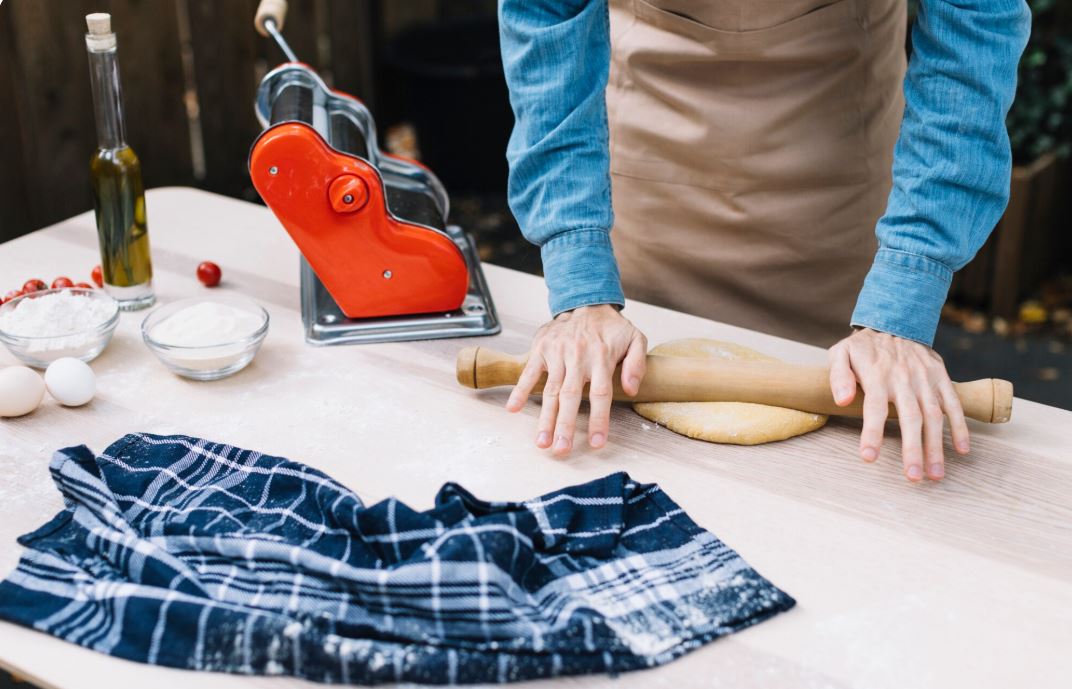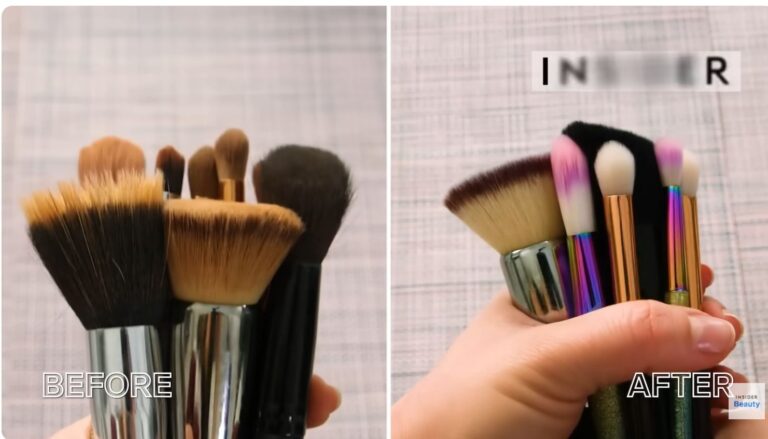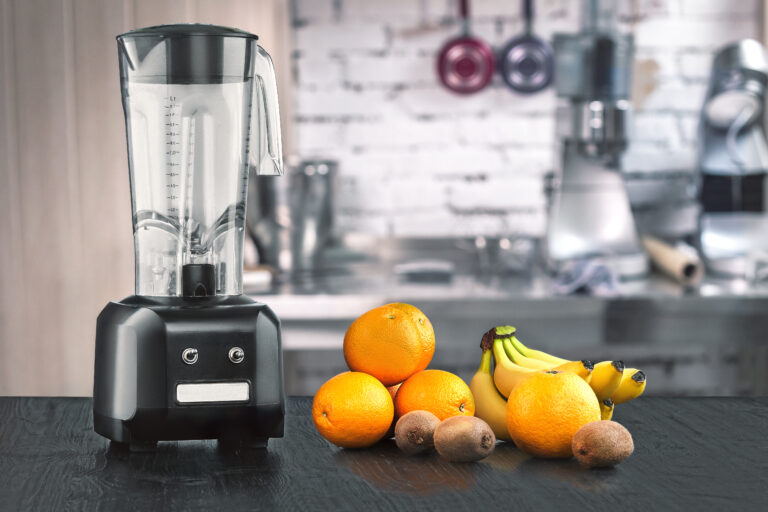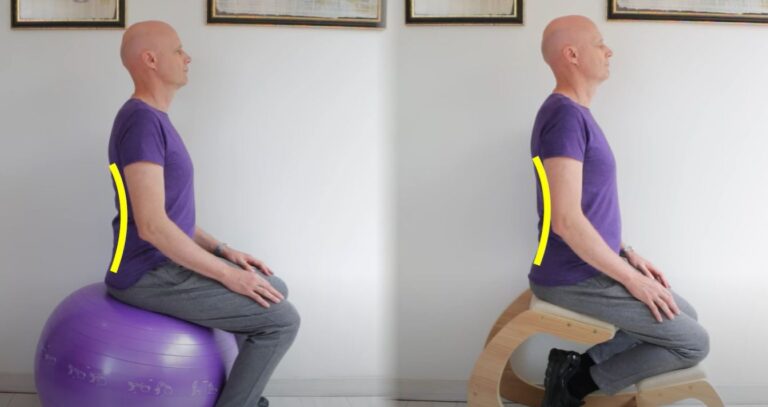how to transport tablecloths without wrinkling
A perfectly set table is a thing of beauty. Every detail, from the gleaming silverware to the sparkling glassware, contributes to a polished aesthetic.
Yet, all that effort can be instantly undermined by a single, common problem: a wrinkled tablecloth.
Transporting tablecloths from one location to another—whether it’s for a wedding, a catered event, a home party, or even just for seasonal storage—is a delicate task. A simple folding or tossing into a bag can result in deep, unsightly creases that are difficult to remove and ruin the intended look.
This guide will provide you with a comprehensive, step-by-step masterclass on how to transport tablecloths without wrinkling them.
We will delve into the science of why fabrics wrinkle, explore the best preparation methods, and detail the most effective techniques for packing and transporting your linens. By the end, you’ll be able to arrive at your destination with a perfectly smooth tablecloth, ready to lay the foundation for a flawless event.
Table of Contents
ToggleUnderstanding the Problem of Wrinkled Tablecloths
To prevent wrinkles, you first need to understand why they form. A tablecloth’s fabric is composed of fibers. When these fibers are compressed, bent, or twisted, they hold that shape, creating a crease. The key to wrinkle-free transport is to avoid compressing the fabric’s fibers into hard lines.
Why tablecloths wrinkle during transport
Tablecloths wrinkle during transport primarily due to compression and friction. When a tablecloth is folded, the areas at the folds are subjected to intense pressure from the fabric’s own weight and any other items packed with it. This pressure forces the fibers to set in a creased position, creating a sharp, permanent-looking line. Friction from other objects in the bag can also cause the fabric to bunch up and wrinkle.
Fabrics that wrinkle more easily (cotton, linen)
Certain fabrics are more susceptible to wrinkling due to their natural fiber structure.
- Cotton: Cotton is a soft, natural fiber that is very popular for tablecloths. However, its natural fibers are not very elastic, meaning they don’t bounce back to their original shape easily after being compressed. This is why a cotton tablecloth, shirt, or pair of pants will show wrinkles so easily.
- Linen: Linen is a highly absorbent and breathable natural fiber, but it is notorious for its tendency to wrinkle. This is due to the natural stiffness of the flax fibers. While some people appreciate the rustic, crinkled look of linen, it can be a major problem for formal events where a smooth finish is required.
- Pros and Cons of Wrinkle-Prone Fabrics:
- Pros:
- Natural Feel: Both cotton and linen have a soft, natural, and breathable feel that is very comfortable and pleasant to the touch.
- Classic Aesthetic: These fabrics offer a timeless, classic look that is perfect for a wide range of styles, from rustic to formal.
- High Absorbency: They are excellent at absorbing spills, which makes them highly functional for dining.
- Cons:
- High Maintenance: They require significantly more care to look their best, including frequent ironing and careful handling to prevent wrinkles.
- Wrinkle Easily: Their natural structure makes them highly susceptible to wrinkling from even the slightest compression.
- Pros:
Fabrics that resist wrinkles (polyester blends, spandex)
On the other hand, certain synthetic fabrics are designed to be highly wrinkle-resistant, making them ideal for transport.
- Polyester Blends: Polyester is a synthetic fiber that is naturally elastic and holds its shape well. When blended with other fibers, it creates a material that is highly resistant to wrinkling and is very durable.
- Spandex: Spandex is a synthetic fiber known for its extreme elasticity. Tablecloths made with spandex are often used for fitted table covers, as they stretch to fit the table and snap back to their original shape, making them almost impossible to wrinkle.
- Pros and Cons of Wrinkle-Resistant Fabrics:
- Pros:
- Low Maintenance: These fabrics require little to no ironing. They can often be taken directly from the dryer or a packed bag and placed on a table with few wrinkles.
- High Durability: They are highly resistant to stains, stretching, and fading, making them a great choice for long-term use.
- Cost-Effective: Synthetic fabrics are often more affordable than natural fibers like linen.
- Cons:
- Less Natural Feel: They may not have the soft, breathable feel of natural fabrics.
- Less Absorbent: They are not as absorbent as cotton or linen, which can be a drawback for dining.
- Pros:
Preparing Tablecloths Before Transport
The best way to prevent wrinkles during transport is to prepare your tablecloth properly before it is packed. This is a non-negotiable step for a flawless result.
How to wash and press tablecloths before packing
Proper washing and pressing can go a long way in ensuring your tablecloth remains wrinkle-free.
- Washing: Wash your tablecloth according to its care instructions. For cotton and linen, use a fabric softener in the rinse cycle to relax the fibers.
- Drying: Avoid over-drying your tablecloth in the dryer. Remove it while it is still slightly damp. This makes the next step, pressing, much easier and more effective.
- The Ironing Prep: If you are using an iron, the slightly damp fabric will make it easier to remove existing wrinkles and achieve a crisp, smooth finish. If you are using a steamer, the residual moisture will help the steam work more effectively.
Ironing vs. steaming: which is better before travel
Choosing between ironing and steaming depends on the fabric and the final look you desire.
- Ironing: An iron uses heat and pressure to flatten the fabric and remove wrinkles.
- Pros:
- Creates a Crisp Finish: An iron is the best tool for creating sharp, defined creases, which is ideal for a formal, classic look.
- Effective on Tough Wrinkles: The direct heat and pressure can remove even the most stubborn wrinkles from natural fibers like linen.
- Cons:
- Risk of Scorching: A hot iron can easily scorch or burn delicate fabrics if not used with caution.
- Time-Consuming: Ironing a large tablecloth can be a long and labor-intensive process.
- Pros:
- Steaming: A steamer uses hot vapor to relax the fabric’s fibers, allowing wrinkles to fall out naturally.
- Pros:
- Safe for Delicate Fabrics: Steamers are much safer for delicate fabrics like satin or lace, as they don’t apply direct heat.
- Fast and Convenient: Steaming is a much faster process than ironing, as you can work on the entire tablecloth at once.
- Cons:
- Doesn’t Create a Crisp Crease: A steamer will not create the sharp, flat finish that an iron does. It is not the best tool for a highly formal look.
- Pros:
Folding vs. rolling: which method prevents more wrinkles
This is the most crucial decision you will make before packing your tablecloth. The choice between folding and rolling will directly impact the final result.
- Folding: Folding a tablecloth is a simple, quick method that saves space. However, every fold creates a potential hard crease.
- Pros:
- Space-Efficient: Folding allows you to pack your tablecloth into a small space, which is convenient for luggage.
- Cons:
- Creates Hard Creases: Every fold creates a hard, permanent line that will need to be re-ironed or steamed upon arrival.
- Pros:
- Rolling: Rolling is the superior method for preventing wrinkles. It avoids hard creases by distributing the pressure evenly across the fabric.
- Pros:
- Prevents Creases: Rolling avoids sharp folds, which means your tablecloth will be free of hard lines when you unroll it.
- Maintains a Smooth Finish: It keeps the fabric in a smooth state, minimizing wrinkles from compression.
- Cons:
- Takes Up More Space: A rolled tablecloth can be bulkier and more cumbersome to pack than a folded one.
- Pros:
Methods for Wrinkle-Free Tablecloth Packing
Once your tablecloth is clean and pressed, it’s time to pack it using a method that will keep it pristine during transport.
Rolling tablecloths around a tube or hanger
This is the gold standard for transporting tablecloths. By rolling the tablecloth around a rigid, round object, you can completely avoid hard creases.
- Step-by-Step Guide:
- Find a Tube: A long cardboard tube, such as the kind found inside a roll of wrapping paper or a poster tube, is ideal.
- Lay Out the Tablecloth: Lay your freshly ironed or steamed tablecloth on a clean, flat surface.
- Start Rolling: Place the tube at one end of the tablecloth and begin to roll it up tightly and evenly. Make sure there are no wrinkles or bunches as you roll.
- Secure: Once the tablecloth is fully rolled, you can secure it with a soft ribbon or a piece of elastic to keep it from unrolling.
- Pros and Cons:
- Pros:
- Professional Results: This method delivers the best results for wrinkle prevention. You can unroll the tablecloth at your destination and place it directly on the table.
- Maximum Crease Prevention: It completely eliminates hard creases by avoiding folds altogether.
- Cons:
- Requires Extra Space: This method requires a long tube, which can be difficult to pack in a suitcase.
- Pros:
Using tissue paper or sheets between folds
If you must fold your tablecloth for space, using a layer of tissue paper between each fold is a great way to minimize wrinkles.
- Step-by-Step Guide:
- Lay Out the Tablecloth: Lay your tablecloth out flat on a clean surface.
- Add the Tissue Paper: Place a large sheet of acid-free tissue paper over the entire tablecloth.
- Fold: Make your first fold, and then place another sheet of tissue paper on top before making the next fold. Repeat this process until the tablecloth is fully folded.
- Why It Works: The tissue paper acts as a buffer that reduces friction and prevents the fabric from setting into a hard crease.
- Pros and Cons:
- Pros:
- Effective for Folding: This is the best method for preventing creases when folding is your only option.
- Low Cost: Tissue paper is inexpensive and easy to find.
- Cons:
- Not Foolproof: This method will not completely eliminate wrinkles, especially if the tablecloth is heavily compressed during transport.
- Pros:
Storing in garment bags for short trips
For long, formal tablecloths, a garment bag is an excellent solution for short trips.
- Step-by-Step Guide:
- Fold the Tablecloth: Fold the tablecloth in half lengthwise to create a long, narrow strip.
- Place on a Hanger: Gently place the tablecloth over the bottom bar of a hanger.
- Put in Garment Bag: Place the hanger and tablecloth inside a garment bag.
- Pros and Cons:
- Pros:
- Keeps Tablecloths Safe: A garment bag protects the tablecloth from spills and dirt.
- Ideal for Long Tablecloths: It is a great solution for transporting long tablecloths without a rigid tube.
- Cons:
- Can Still Create Creases: This method will still create a crease where the tablecloth hangs over the hanger. It is best for short trips where you can steam the tablecloth upon arrival.
- Pros:
Plastic Bins vs. Fabric Bags: Best Storage Options
For long-term storage, how you pack your tablecloths is just as important as how you transport them. The two most common storage solutions are plastic bins and fabric bags, and each has distinct pros and cons.
Plastic Bins for Storage
Plastic bins are a popular choice for their durability and stackability, making them great for storing items in a garage or basement.
- Pros:
- Excellent Protection: Plastic bins offer a durable barrier against dust, moisture, and pests, keeping your tablecloths clean and safe from damage.
- Stackable: Their rigid structure allows them to be stacked, saving valuable storage space.
- Cons:
- Lack of Breathability: Plastic is not breathable, which can trap moisture and lead to a musty odor or, in the worst cases, mildew. This is especially true for natural fabrics like cotton and linen.
- Can Cause Creases: The rigid nature of plastic bins can press on the tablecloths, creating hard creases if they are not stored with care. To prevent this, roll your tablecloths and place them in the bin without any other heavy items on top.
Fabric Bags for Storage
Fabric bags, especially those made from a breathable material like canvas, are the ideal choice for storing natural-fiber tablecloths.
- Pros:
- Breathability: Fabric allows air to circulate, preventing the musty smell that can develop in a sealed plastic environment. This is crucial for maintaining the quality of natural fibers.
- Gentle on Fabrics: Fabric bags are soft and will not press hard on the tablecloths, which helps prevent creases from forming during storage.
- Cons:
- Less Protection: They offer less protection from pests and moisture than a sealed plastic bin.
- Less Space-Efficient: They are not stackable, which can take up more space in your closet or storage area.
Transport Options for Different Needs
The best method for transporting your tablecloths depends on the scale of your event and the distance you need to travel.
Personal Home Events (Small-Scale Transport)
For a quick trip across town, the goal is convenience and efficiency.
- Recommended Method: The best option for a personal event is to hang the tablecloth over a car hanger or a large, rigid tube. You can then place it in a garment bag for protection. This method keeps the tablecloth in a smooth, flat state and is easy to do for just a few items.
Professional Caterers and Event Planners (Large-Volume Transport)
Professionals need a method that is both efficient and guarantees a wrinkle-free result for a large number of items.
- Recommended Method: The most common method for professionals is to roll multiple tablecloths around a single, large-diameter cardboard tube. This allows them to transport dozens of tablecloths on a single rolling rack, saving time and effort. The tablecloths are kept in a perfectly smooth state and can be unrolled and placed on the tables in minutes.
Destination Weddings and Long-Distance Travel
Long-distance travel requires a method that balances wrinkle prevention with the need for compact packing.
- Recommended Method: For destination weddings, the best method is to carefully fold the tablecloths with layers of acid-free tissue paper and pack them as the very last item in a rolling suitcase. Upon arrival, the tablecloths will need to be steamed. However, this method will prevent the deep creases that are impossible to remove without professional help.
Using Hangers for Wrinkle Prevention
The simple coat hanger can be a powerful tool for wrinkle-free transport, especially for long tablecloths.
How to Hang Tablecloths in Garment Bags
- Step-by-Step Guide:
- Find a Garment Bag: Garment bags are a great option for transporting long tablecloths.
- Fold the Tablecloth: Fold the tablecloth in half lengthwise to create a long, narrow strip.
- Use a Cardboard Hanger: Drape the tablecloth over the bottom bar of a cardboard hanger. Cardboard is gentler on the fabric than wire.
- Fold the Hanger: Gently fold the top of the hanger down and place it inside the garment bag. This method prevents a sharp crease from forming at the top of the tablecloth.
- Pros and Cons:
- Pros:
- Ideal for Long Tablecloths: This is one of the best ways to transport long tablecloths without a rigid tube.
- Protective: A garment bag protects the tablecloth from dirt and spills during transport.
- Cons:
- Still Creates a Crease: This method will still create a crease where the tablecloth hangs over the hanger.
- Pros:
Hanging in Cars and Vans for Delivery
For short-distance transport, hanging tablecloths in a car is a great option.
- Tips for Success:
- Use a clothes hanger bar that fits across the car’s back seat.
- Hang the tablecloths on the hanger, making sure they are not touching the floor.
- Drape them over the top of the seat to avoid creasing at the bottom.
- Pros and Cons:
- Pros:
- Quick and Easy: This is a simple and effective method for small-scale transport.
- Cons:
- Limited Capacity: This method only works for a small number of tablecloths.
- Pros:
Special Wrinkle-Resistant Storage Hacks
For those who are looking for extra-effective solutions, these hacks are a must-try.
Using Vacuum-Sealed Bags Carefully
Vacuum-sealed bags are a great way to save space, but they must be used with caution for tablecloths.
- How It Works: Vacuum-sealed bags remove all the air, compressing the contents to a fraction of their original size.
- Pros and Cons:
- Pros:
- Major Space-Saver: This method is unparalleled for saving space in a closet or suitcase.
- Cons:
- Can Cause Permanent Wrinkles: The intense compression can crush natural fibers, leaving them with deep, permanent wrinkles that are impossible to remove. This method is only recommended for wrinkle-resistant fabrics like polyester.
- Pros:
Packing in Rolling Suitcases with Soft Folds
If you must pack your tablecloth in a suitcase, this method will minimize wrinkles.
- How It Works: The key is to avoid hard folds and to use the pressure of the suitcase to your advantage.
- Step-by-Step Guide:
- Roll the Tablecloth: Roll the tablecloth carefully, without any folds.
- Place in Suitcase: Place the rolled tablecloth on the top of your packed items, so that it is not being compressed by other items.
- Layer with Clothes: You can also use this method to pack the tablecloth with soft, folded clothes. This will add a layer of cushioning that will prevent hard creases from forming.
- Pros and Cons:
- Pros:
- Minimizes Wrinkles: This method is a great way to minimize wrinkles when packing in a suitcase.
- Cons:
- Not a Perfect Solution: You may still end up with some wrinkles that will need to be steamed upon arrival.
- Pros:
Layering with Towels for Protection
- How It Works: Layering your tablecloths with clean, soft towels or sheets will provide an extra layer of cushioning and protection.
- Pros and Cons:
- Pros:
- Extra Cushioning: The towels will prevent the tablecloth from being crushed by other items.
- Cons:
- Takes Up More Space: This method will take up more space in your luggage.
- Pros:
Dealing with Wrinkles Upon Arrival
Despite all your best efforts, you may still arrive at your destination with a few wrinkles. The key is to have a plan for a quick and effective fix.
Quick Steaming Solutions at the Venue
A portable garment steamer is a must-have tool for any event planner.
- Pros:
- Fast and Effective: A portable steamer can remove wrinkles in minutes, ensuring your tablecloth is ready for use.
- Safe for All Fabrics: Steaming is a gentle method that is safe for all fabrics, from delicate lace to durable polyester.
- Cons:
- Requires an Outlet: You will need an electrical outlet to use a steamer.
Emergency Hacks: Hot Shower Steam, Hair Dryer, Iron-on-Site
When you don’t have access to a steamer, these emergency hacks can save the day.
- Hot Shower Steam:
- How It Works: Hang the tablecloth on a hanger in a bathroom and turn the shower on to its hottest setting. The hot, moist air will relax the fabric’s fibers, allowing the wrinkles to fall out.
- Hair Dryer:
- How It Works: Lightly spritz the tablecloth with a spray bottle filled with water, then use a hair dryer on a low setting to blow the wrinkles away.
- Iron-on-Site:
- How It Works: This is a last resort. If you have to iron the tablecloth, be sure to use a clean towel as a pressing cloth to protect the fabric from direct heat.
- Pros and Cons of Emergency Hacks:
- Pros:
- Accessible: These hacks use common items you can find in any hotel room.
- Cost-Free: They are a free and effective way to deal with wrinkles in a pinch.
- Cons:
- Not as Effective: They are not as effective as a steamer and will not remove deep, stubborn wrinkles.
- Pros:
Choosing Wrinkle-Resistant Fabrics for Easier Transport
The easiest way to prevent wrinkles is to select a fabric that is naturally resistant to them. These modern materials are designed for durability, easy care, and a smooth finish.
Polyester and Polyester Blends
Polyester is the number one choice for a wrinkle-resistant tablecloth. This synthetic fiber has a smooth, resilient surface that resists creasing.
- Pros:
- High Durability: Polyester is incredibly strong and resistant to stretching, fading, and shrinking. It can withstand repeated use and washing without losing its quality.
- Wrinkle-Resistant: The molecular structure of polyester allows it to “bounce back” from compression, meaning it will show far fewer wrinkles than natural fibers.
- Stain-Resistant: Polyester is not highly absorbent, which makes it easy to clean up spills.
- Cons:
- Can Feel Less Natural: Some people prefer the soft, natural feel of cotton or linen over the smooth, synthetic feel of polyester.
- Less Breathable: Polyester is not as breathable as natural fibers, which can be a consideration in warm climates.
Spandex and Stretch Fabrics
For a modern, form-fitting look, spandex tablecloths are a perfect choice. They are designed to stretch over a table and snap back into place, making wrinkles virtually impossible.
- Pros:
- Guaranteed Wrinkle-Free: Spandex stretches to fit a table perfectly, leaving no loose fabric to wrinkle. This is the ultimate no-fuss, wrinkle-free solution.
- Clean, Modern Look: They provide a sleek, streamlined look that is perfect for professional events, trade shows, and contemporary settings.
- No Sizing Issues: The stretch of the fabric makes it easy to fit a variety of table sizes and shapes.
- Cons:
- Limited Styles: Spandex tablecloths are not available in a wide variety of styles and are usually limited to solid colors.
- Not Traditional: They are not suitable for a classic or formal aesthetic.
Treated Wrinkle-Free Linens
For those who love the natural feel of linen but want the convenience of a wrinkle-free fabric, there are now treated options available.
- How They Work: These fabrics are made of natural linen but have been treated with a special finish that makes them more resistant to wrinkling.
- Pros:
- Natural Feel with Less Maintenance: They provide the soft, breathable feel of linen without the hassle of excessive wrinkling.
- Combines the Best of Both Worlds: They offer the classic elegance of linen with the practicality of a wrinkle-resistant fabric.
- Cons:
- More Expensive: Treated linens are more expensive than both untreated linen and polyester.
- May Still Wrinkle: While they are more wrinkle-resistant, they are not completely wrinkle-proof like spandex or polyester.
Professional Tips From Event Planners
For professionals who deal with large quantities of linens, wrinkle prevention is a science. Here are some insider tips from caterers and event rental companies.
How Catering Companies Transport Large Quantities
Professional caterers have mastered the art of transporting large volumes of tablecloths without a single crease.
- Transport Method: They almost always use large-diameter cardboard or plastic tubes to roll their tablecloths. They can roll dozens of tablecloths on a single tube, and the tube is then placed on a rolling rack for easy transport. This method is the most efficient for both transport and storage.
- On-Site Preparation: Caterers always have a portable steamer on hand for a quick touch-up before the event begins.
Tips From Rental Companies on Bulk Transport
Event rental companies deal with thousands of tablecloths a week, and they have developed highly efficient systems for keeping them pristine.
- Professional Pressing: Rental companies use high-powered professional presses to ensure every tablecloth is perfectly flat and wrinkle-free before it is packed.
- Rolling for Transport: They almost exclusively roll their tablecloths for transport, as this is the only way to guarantee a crease-free finish.
Insider Hacks for Flawless Presentation
- The “Hotel Ironing Trick”: When you are in a hotel room without a steamer, a great hack is to hang the tablecloth in the bathroom and run the shower on its hottest setting. The steam from the shower will help release the wrinkles.
- The “Immediate Hang-Up”: As soon as you arrive at your destination, unroll your tablecloth and hang it up. The weight of the fabric will help to smooth out any small wrinkles that may have formed during transport.
Mistakes to Avoid When Transporting Tablecloths
Even with all the right tools and knowledge, a simple mistake can ruin your efforts. Avoiding these common pitfalls will save you from frustration.
Over-Packing and Squeezing Too Tightly
- The Problem: Over-packing a bag or container puts immense pressure on your tablecloths, crushing the fibers and creating deep, stubborn creases that are almost impossible to remove.
- The Solution: Always give your tablecloths plenty of room to breathe. Use a larger container than you think you need, and don’t place any heavy items on top of them.
Leaving Tablecloths Folded for Too Long
- The Problem: Even with tissue paper, a hard crease will eventually form if a tablecloth is left folded for an extended period. This is because the fabric’s fibers will set in that position over time.
- The Solution: For long-term storage, always roll your tablecloths instead of folding them. If you must fold them for a trip, unroll them as soon as you arrive at your destination.
Using Rough or Dirty Storage Bins
- The Problem: A rough or dirty storage bin can snag delicate fabrics, leaving them with permanent damage. A dirty bin can also stain your tablecloths or cause them to develop a musty odor.
- The Solution: Always store your tablecloths in a clean, smooth container. A plastic bin with a fabric liner or a fabric bag is a great choice.
FAQs About Transporting Tablecloths
- Can you fold tablecloths without wrinkling?
- Answer: You can minimize wrinkles by folding with care, but you cannot completely prevent them. The best way to transport a tablecloth without wrinkles is to roll it.
- Should you iron before or after transporting?
- Answer: It is best to do both. Iron your tablecloth before transport to get it in a pristine state. Then, use a portable steamer for a quick touch-up upon arrival.
- What is the best way to store tablecloths between events?
- Answer: The best way to store a tablecloth depends on its fabric. For cotton and linen, a breathable fabric bag is the best choice. For polyester, a clean plastic bin is also a good option. In all cases, make sure the tablecloth is rolled, not folded.
- How do you keep satin or lace tablecloths wrinkle-free?
- Answer: Delicate fabrics like satin and lace should never be ironed directly. The best way to keep them wrinkle-free is to roll them for transport and use a portable steamer for a quick touch-up upon arrival.
Conclusion
Choosing the right tablecloth for your table is a journey that begins with a simple measurement and ends with a perfectly smooth, wrinkle-free presentation. By mastering the art of fabric selection, professional transport, and proper care, you can ensure your tablecloth always looks its best. The perfect tablecloth experience is a combination of these three factors, creating a beautiful foundation for any meal, from a simple family dinner to a grand celebration.
- Recap of Wrinkle-Free Transport Methods:
- Rolling on a Tube: The best method for a perfect, crease-free finish.
- Garment Bag: A great solution for long, formal tablecloths.
- Layering with Tissue Paper: A good way to minimize wrinkles when folding is necessary.
- Choosing Wrinkle-Resistant Fabrics: The easiest way to avoid wrinkles from the start.
- Personal Tip: Always keep a portable garment steamer in your event kit. It’s the most valuable tool for a quick and effective wrinkle solution upon arrival.







